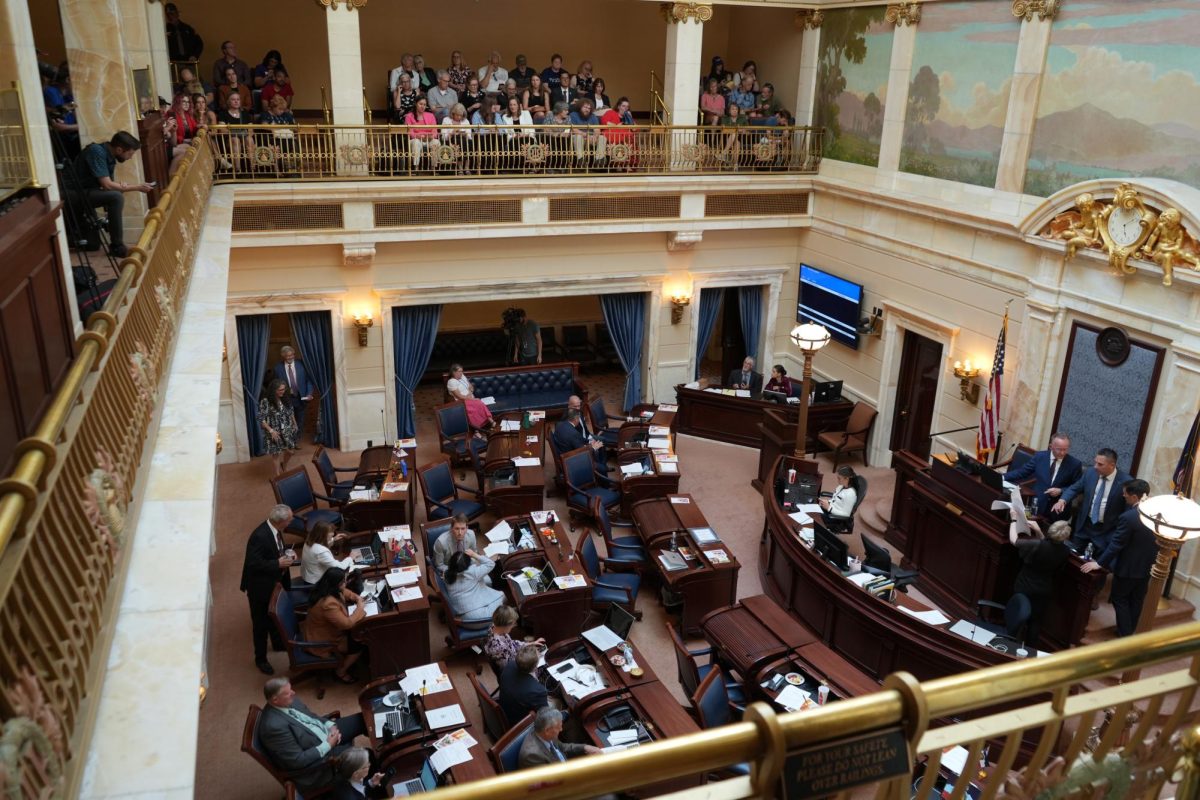Amendment D has had no shortage of controversy over its short but highly contested lifespan. The constitutional amendment was first introduced at a special legislative session in August. After passing through the session, it was to be sent to Utah voters to issue a final ruling.
However, after two court hearings and much public debate, the amendment was ruled void in September after the Utah Supreme Court reaffirmed a lower district courts’ ruling that the amendment failed to uphold two constitutional prerequisites.
The amendment would have adjusted the Utah constitution to state that “the people’s exercise of their Legislative power … does not limit or preclude the exercise of Legislative power, including through amending, enacting or repealing a law.”
In other words, it would have given Utah legislatures the power to alter or repeal ballot initiatives, which allow Utah voters to propose new laws. To propose an initiative, petitioners must collect nearly 135,000 signatures from at least 26 of Utah’s 29 state senate districts.
The Supreme Court rejected Amendment D for violating two constitutional prerequisites. The first was that the state did not cause the amendment to be published in Utah newspapers for two months before the election.
“The proposed amendment was not published in newspapers as required by the constitution but was instead posted to a public notice website,” the Utah Supreme Court’s opinion on the case, written by Justice Diana Hagen, reads.
The second prerequisite regarded the amendment’s ballot language.
Earlier this year, the legislature passed a law modifying election codes to allow lawmakers to write ballot language. Instead of being written by legislative attorneys, ballot language is now written by the House speaker and Senate president.
During the amendment’s hearing at the Supreme Court, the League of Women Voters, which first initiated legal action against it, said the ballot language was “campaign language.”
“It’s one part campaign in favor of it, and one part the opposite of the amendment,” Mark Gaber, who represented The League of Women Voters, said.
The ballot language asked voters if “the Utah Constitution be changed to strengthen the initiative process” by “clarifying the voters and legislative bodies’ ability to amend laws” and prohibiting foreign influence.
The state, on the other hand, argued that the average voter would know what the amendment does based on surrounding circumstances.
Taylor Meehan, who represented the Utah Legislature at the hearing, pointed to news coverage on the amendment and voter information packets as ways Utahns can get information beyond what’s written on the ballot.
“The constitutional question is, does the ballot identify for the voters what they’re voting on?” Meehan said at the hearing. “If the ballot summary isn’t intended to educate the voters, that’s what the voter information templates are about.”
However, Justice Paige Peterson questioned where in the ballot language voters are informed that the amendment will allow legislatures to repeal and replace citizen initiatives at will.
“The constitution will no longer give [citizen initiatives] any protection, so it could be amended or repealed, as far as the Constitution is concerned, at will by this amendment,” Peterson said. “My question is, where does the ballot summary tell people that?”
Ultimately, the Court unanimously upheld voiding the amendment.
“The Legislature cannot undermine the will of the voters by impairing the reform unless such action is narrowly tailored to achieve a compelling governmental interest,” the opinion reads.
It also noted that legislatures are not powerless against ballot initiatives and can “make whatever changes are needed to carry out the intended government reform.”
While opponents of the amendment celebrated the decision, the court’s decision has also drawn criticism.
Derek Monson and William C. Duncan of the Sutherland Institute said the Utah Supreme Court has practiced “judicial activism” with its recent rulings.
“Judicial restraint, in keeping with the constitutional separation of powers, has helped make Utah an example of good governance to the nation,” the pair wrote in an opinion piece published by Deseret News. “Utah judges, policymakers and voters ought to carefully consider the ramifications of moving away from that bedrock legal principle.”
On the other hand, Katharine Biele, the League of Women Voters of Utah president, praised the decision and called the amendment “unnecessary.”
“Today, the court has ruled the legislature’s bait-and-switch has failed,” Biele said in a statement. “Make no mistake, this rush to amend the constitution was unnecessary, and we hope lawmakers reconsider their tactics. Citizens voted them into office in good faith, a faith that they would respect their constituents and work transparently. We believe in representative government and the principles that make our democracy work. The court agrees.”
The amendment will still appear on the ballot, as the court ruling was issued after ballots had already begun printing. Votes on the amendment will not be counted.
This story has been corrected to reflect that Diana Hagen, not Dianna Gibson wrote the Supreme Court’s opinion on Amendment D




Joan Keller • Nov 3, 2024 at 12:47 pm
Hello: I note that you were talking about the Supreme Court decision in paragraph 6 but listed Judge Gibson as the author on the case. She was the district court judge who ruled the case before her. It was then appealed to the supreme court and that opinion was written by Justice Diana Hagen.
Caelan Roberts • Nov 3, 2024 at 1:23 pm
Hi Joan,
The story has been corrected. Thank you!
Caelan Roberts (online managing editor)